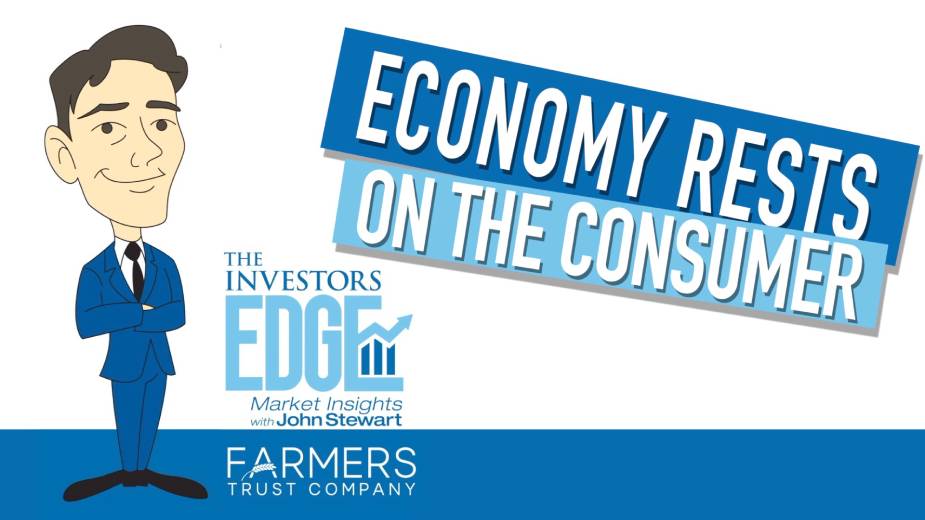Bank Turmoil Continues | The Investors Edge
By John Stewart, chief investment officer at Farmers Trust Co.
Week in Review: Bank Turmoil Continues
It’s been less than two months since the failures of Silicon Valley and Signature Banks, which at the time were the second and third largest bank failures in U.S. history.
This past week, however, First Republic Bank was seized by the FDIC and immediately sold to JPMorgan, moving it into second place for the largest bank failures of all time.
As the week wore on, PacWest became the next bank on failure watch with its stock plunging more than 70% in just a few days. Western Alliance looks to be heading in a similar direction as well.
It’s hard not to notice that all these banks are either based on the West Coast, or had substantial exposure there in the case of Signature. Combining the rapid rise of interest rates with poor asset/liability management and challenges in the land of technology start-ups and venture capital has produced a toxic environment for these banks.
A big problem now seems to be that once a bank is branded as a potential problem in the financial media, their demise becomes a self-fulfilling prophecy as it causes more deposits to flee, raises funding costs, and encourages top talent to seek other opportunities.
At some point, the remaining banks will be made stronger after culling the herd of its weakest members. In the meantime, there may still be a few more shoes to drop before all is said and done.
Featured Insight: In Markets, Ignorance Is Not Bliss
Investing in publicly traded securities is difficult in large part because of the minute-by-minute pricing updates made available to us through modern technology.
Knowing what your portfolio is worth every second of the day can create strong emotional responses that lead to bad decisions.
And while I encourage investors to think long-term and avoid checking their portfolio value every single day, there are investment products that have taken advantage of investors desire to not experience price volatility.
Many of these so-called “non-traded” investments claim to be safer or produce better returns than traditional investments, but there is no free lunch.
Since some of these investment vehicles update their market values very infrequently – in some cases, years – you may not realize if the value of the underlying assets is deteriorating in value.
Be very careful to understand the details of any investment that doesn’t have a readily available market value, because in this case at least, ignorance is definitely not bliss.
Looking Ahead: Sell in May?
There’s an old market adage that says “Sell in May, and Go Away”, referring to the seasonal anomaly that there tends to be below average stock market performance between May and September.
With all the things to worry about – bank failures, Fed raising interest rates, recession predictions, debt ceiling – I could go on and on, why wouldn’t it make sense to take the summer off from market volatility?
Well, for one, the market loves to surprise people. If everyone is thinking the same way, in this case fairly negatively, it becomes more likely that the outcome will be the opposite of what most people think it will be.
While there is obviously the possibility of more market volatility in the months ahead, don’t let Old Wives’ Tales or clever sounding phrases that rhyme deter you from your long-term investment plans.
Copyright 2024 The Business Journal, Youngstown, Ohio.


